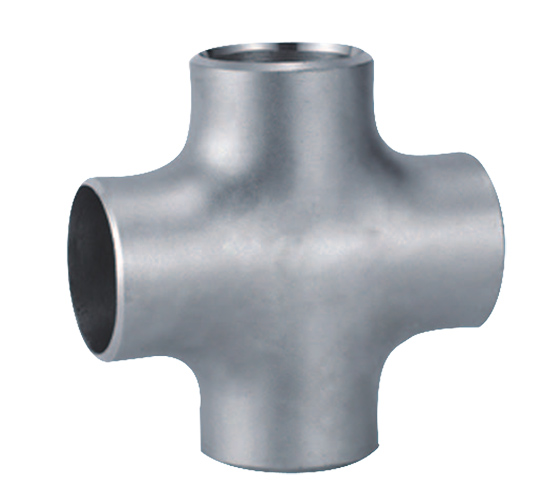-
Cangzhou Yulong Steel Co., Ltd.
-
Phone:
+86 13303177267 -
Email:
admin@ylsteelfittings.com
- English
- Arabic
- Italian
- Spanish
- Portuguese
- German
- kazakh
- Persian
- Greek
- French
- Russian
- Polish
- Thai
- Indonesian
- Vietnamese
- Zulu
- Korean
- Uzbek
- Hindi
- Serbian
- Malay
- Ukrainian
- Gujarati
- Haitian Creole
- hausa
- hawaiian
- Hebrew
- Miao
- Hungarian
- Icelandic
- igbo
- irish
- Japanese
- Javanese
- Kannada
- Khmer
- Rwandese
- Afrikaans
- Albanian
- Amharic
- Armenian
- Azerbaijani
- Basque
- Belarusian
- Bengali
- Bosnian
- Bulgarian
- Catalan
- Cebuano
- China
- China (Taiwan)
- Corsican
- Croatian
- Czech
- Danish
- Esperanto
- Estonian
- Finnish
- Frisian
- Galician
- Georgian
- Kurdish
- Kyrgyz
- Lao
- Latin
- Latvian
- Lithuanian
- Luxembourgish
- Macedonian
- Malgashi
- Malayalam
- Maltese
- Maori
- Marathi
- Mongolian
- Myanmar
- Nepali
- Norwegian
- Norwegian
- Occitan
- Pashto
- Dutch
- Punjabi
- Romanian
- Samoan
- Scottish Gaelic
- Sesotho
- Shona
- Sindhi
- Sinhala
- Slovak
- Slovenian
- Somali
- Sundanese
- Swahili
- Swedish
- Tagalog
- Tajik
- Tamil
- Tatar
- Telugu
- Turkish
- Turkmen
- Urdu
- Uighur
- Welsh
- Bantu
- Yiddish
- Yoruba

Dec . 03, 2024 16:24 Back to list
Understanding API 5L Out of Roundness Tolerance in Pipeline Standards and Applications
Understanding API 5L Out of Roundness Tolerance
In the realm of pipeline construction, the API 5L specification plays a crucial role in ensuring that line pipe products meet the stringent requirements necessary for safe and efficient operations. Among various factors considered during the manufacturing and inspection of these pipes, out of roundness tolerance is one of the significant parameters influencing a pipeline's performance. This article will delve into what API 5L out of roundness tolerance entails, why it matters, and how it impacts the integrity and efficiency of pipelines.
What is Out of Roundness?
Out of roundness refers to a condition where a circular object, such as a pipe, deviates from a perfect circular shape. In an ideal scenario, the cross-section of a pipe should be a perfect circle. However, due to manufacturing techniques, material properties, and external factors, imperfections can arise. These imperfections are often described in terms of roundness tolerance. The roundness of a pipe can significantly affect its mechanical properties, flow characteristics, and overall performance.
API 5L Specification Overview
API 5L, which stands for American Petroleum Institute Specification 5L, primarily governs the manufacturing and testing of steel pipes used in the transportation of gas and oil. The specification encompasses various grades and types of pipes, with detailed guidelines on material properties, dimensions, and tolerances. Among these guidelines, out of roundness tolerance is essential for ensuring that pipes can withstand the pressures and environmental conditions they encounter in service.
Importance of Out of Roundness Tolerance
Out of roundness tolerance is critical for several reasons
1. Flow Efficiency A pipe that is not perfectly round may create disturbances in the flow of fluids. This can lead to increased pressure drops, inefficiencies in transportation, and potential operational issues. Smooth and consistent diameters facilitate better flow dynamics.
api 5l out of roundness tolerance

2. Mechanical Integrity Pipes are subjected to various stresses during installation and operation. A pipe with significant deviations from roundness may experience uneven stress distribution, increasing the likelihood of failures, such as buckling or cracking, particularly under high pressure or changing temperatures.
3. Compatibility with Fittings Pipes often need to connect with other equipment and fittings. If the out of roundness exceeds specified tolerances, it may hinder proper sealing and fitting alignment. This can lead to leaks or joint failures, compromising the entire pipeline system.
4. Inspection and Maintenance The roundness of a pipe affects the effectiveness of inspection and maintenance efforts. Non-circular pipes could complicate the use of inspection tools, making it challenging to assess the pipe's condition accurately.
API 5L Tolerance Guidelines
API 5L provides specific tolerance values for out of roundness based on pipe diameter and schedule. Generally, the allowable out of roundness is expressed as a percentage of the nominal diameter of the pipe. Manufacturers must adhere to these tolerances during the production process, and thorough inspection is essential before the pipe is put into service.
For example, a common tolerance might state that the out of roundness should not exceed 1% of the nominal diameter for larger diameter pipes. Smaller pipes may have tighter tolerances due to their need for more precise fluid flow characteristics.
Conclusion
In conclusion, out of roundness tolerance is a critical specification in the manufacturing of pipes under API 5L standards. It influences not just the physical integrity and mechanical properties of the pipes but also their efficiency in fluid transportation. As such, understanding and adhering to these tolerances is essential for manufacturers, engineers, and operators in the energy sector. Ensuring pipes remain within specified roundness tolerances not only promotes operational efficiency and safety but also extends the lifespan of pipeline systems, ultimately supporting sustainable resource management in the oil and gas industry.
Latest news
-
ANSI 150P SS304 SO FLANGE
NewsFeb.14,2025
-
ASTM A333GR6 STEEL PIPE
NewsJan.20,2025
-
ANSI B16.5 WELDING NECK FLANGE
NewsJan.15,2026
-
ANSI B16.5 SLIP-ON FLANGE
NewsApr.19,2024
-
SABS 1123 FLANGE
NewsJan.15,2025
-
DIN86044 PLATE FLANGE
NewsApr.19,2024
-
DIN2527 BLIND FLANGE
NewsApr.12,2024
-
JIS B2311 Butt-Welding Fittings LR/SR 45°/90° /180°Seamless/Weld
NewsApr.23,2024











